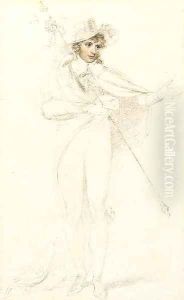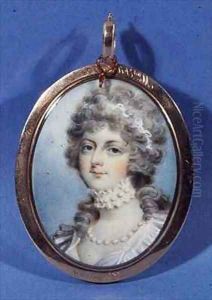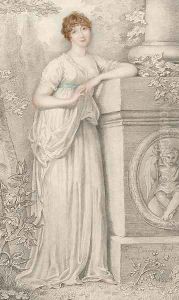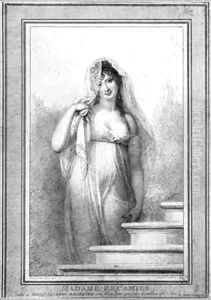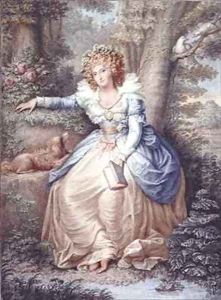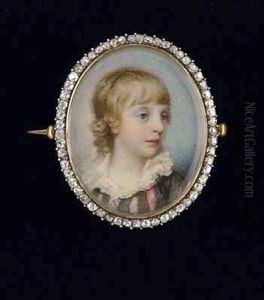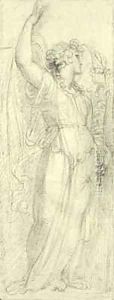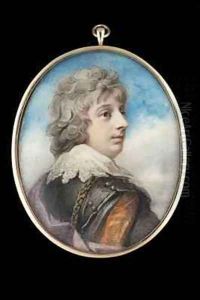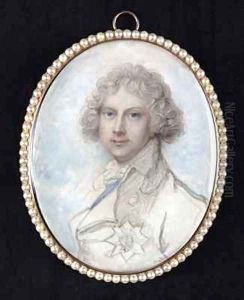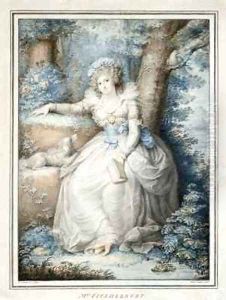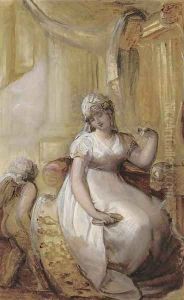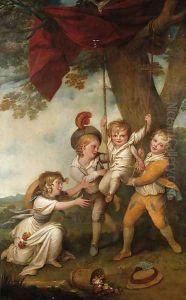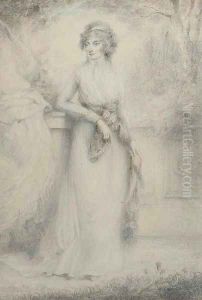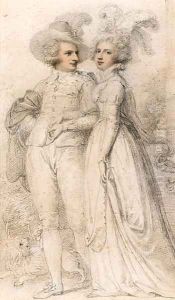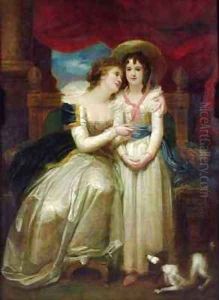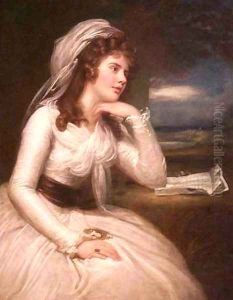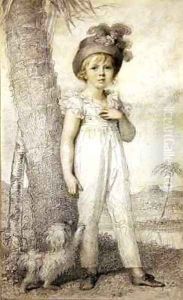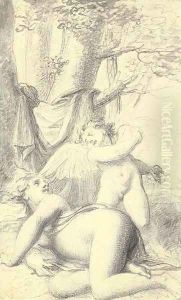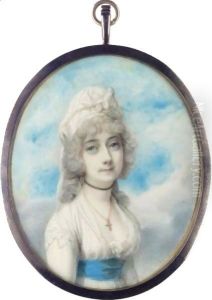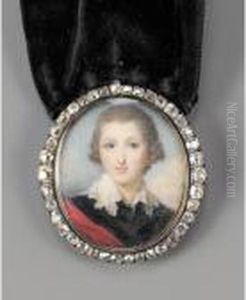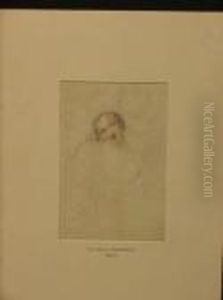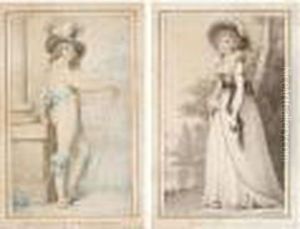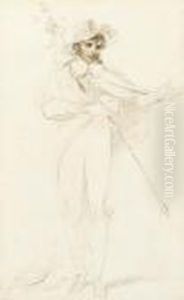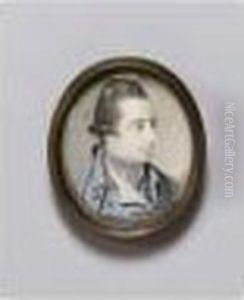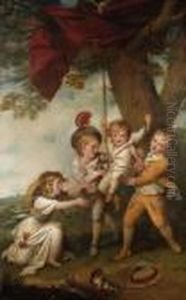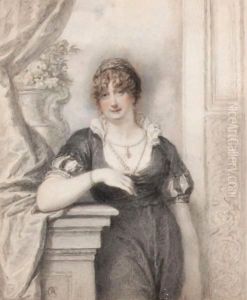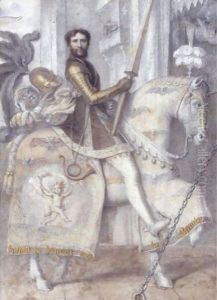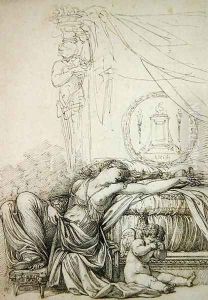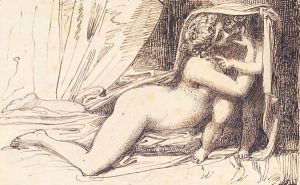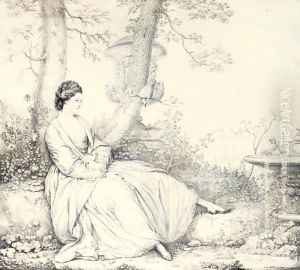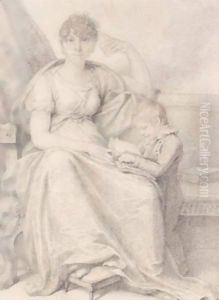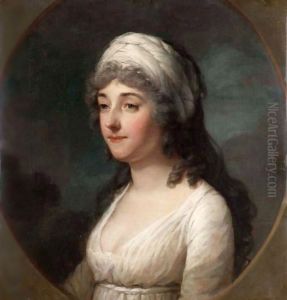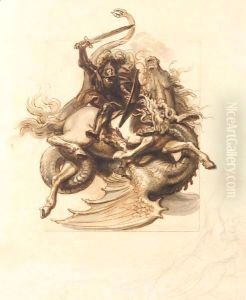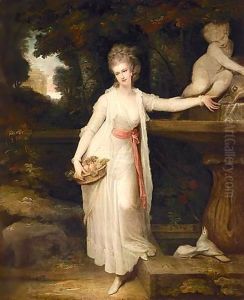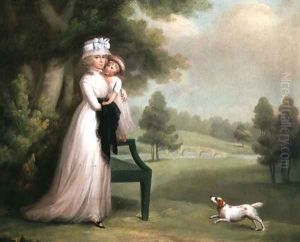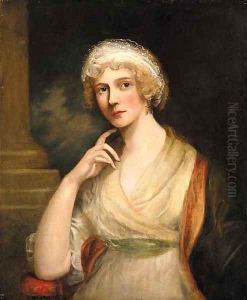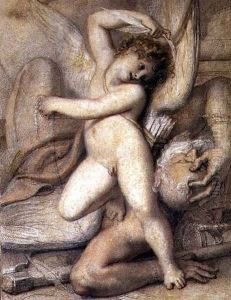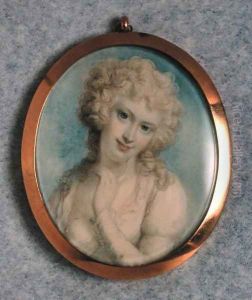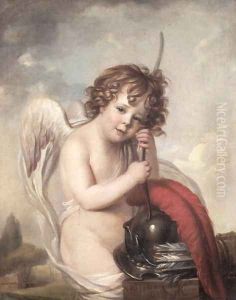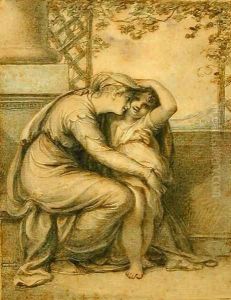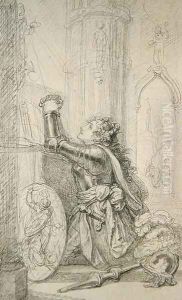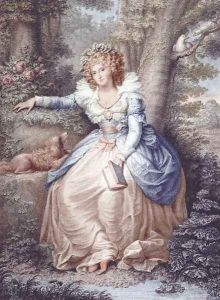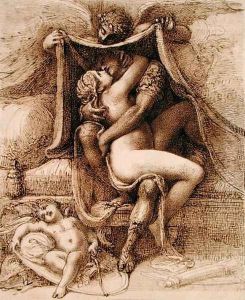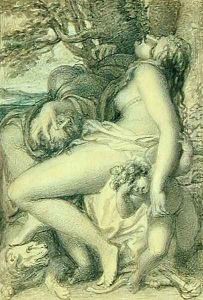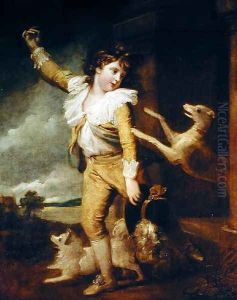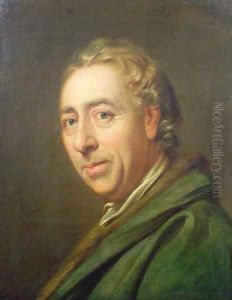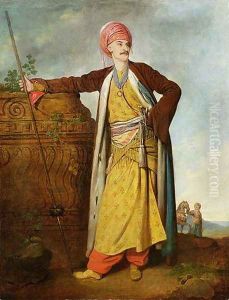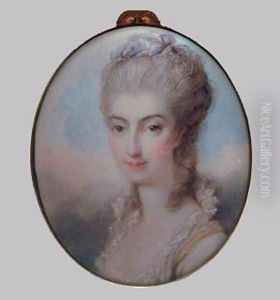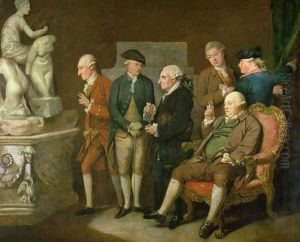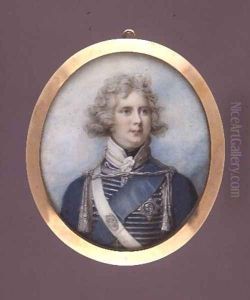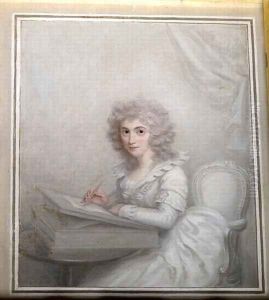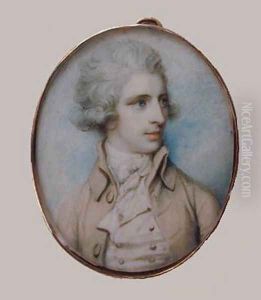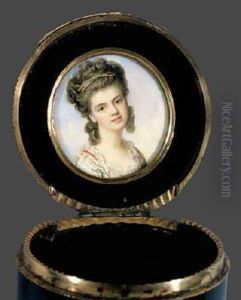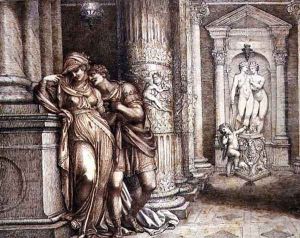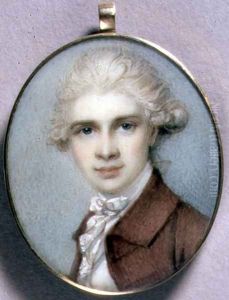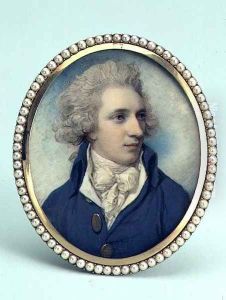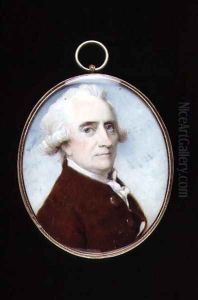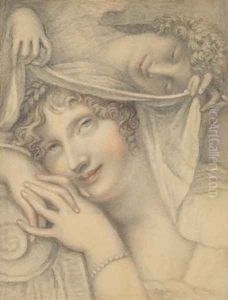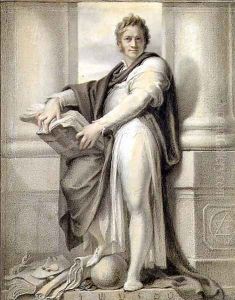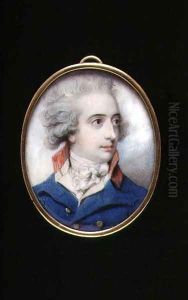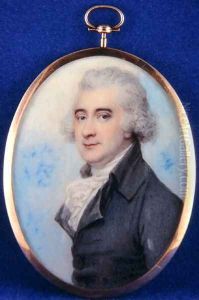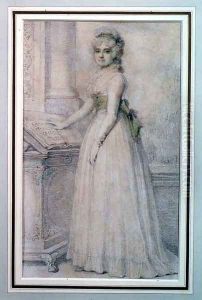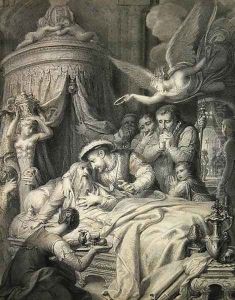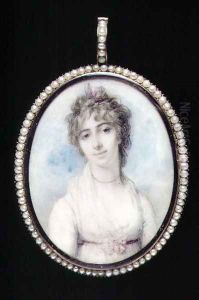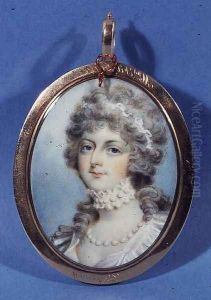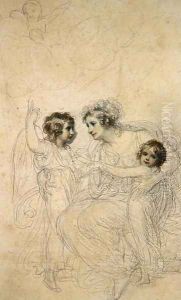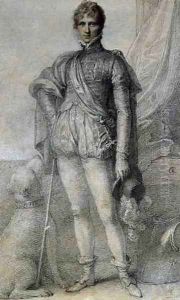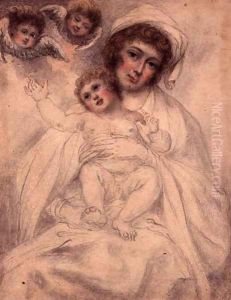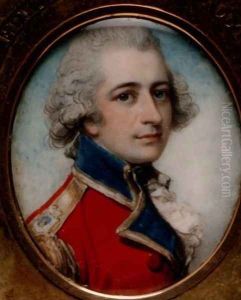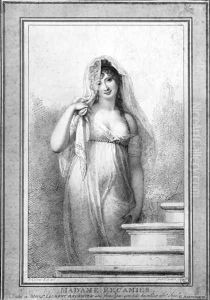Richard Cosway Paintings
Richard Cosway was a prominent English portrait painter during the late 18th century, renowned for his miniatures which captured the elegance and sophistication of his era. Born in Tiverton, Devon, in 1742, Cosway showed artistic promise from a young age. He was educated at the Royal Grammar School, High Wycombe, where his talents were nurtured, and he went on to study at the Shipley's drawing school. In 1754, at the age of just 12, he won a Society of Arts prize.
Cosway's career flourished after he moved to London, where his clientele increasingly included members of high society, such as royalty and the aristocracy. He became a leading figure in London's artistic circles and was elected to the prestigious Royal Academy of Arts in 1771. His marriage to Maria Hadfield in 1781 was a significant social event, and the couple became well-known figures in fashionable circles.
Cosway's work is characterized by its delicate technique and the charm and elegance of its subjects. His miniatures often depicted subjects in profile or half-length poses, imbued with a sense of intimacy and refined grace. He was particularly adept at using light and shadow to enhance the features and clothing of his sitters. Beyond his miniatures, Cosway also painted larger portraits in oil and was proficient in designing decorative art for interiors.
Throughout his career, Richard Cosway was also known for his flamboyant lifestyle and his role as a tastemaker. He and his wife were friends with prominent figures of their time, including Thomas Jefferson and the Prince of Wales, the future King George IV. Cosway's influence extended beyond painting, as he was involved in the design of objects ranging from snuff boxes to grand pianos.
Later in life, Cosway's health and artistic output declined. He suffered from mental health issues and spent some time in a private asylum. Despite this, he continued to paint until his death in 1821. Today, Cosway's miniatures are held in high esteem and can be found in museum collections around the world, including the National Portrait Gallery in London and the Metropolitan Museum of Art in New York. His work remains a testament to the grace and luxury of the Georgian period.
